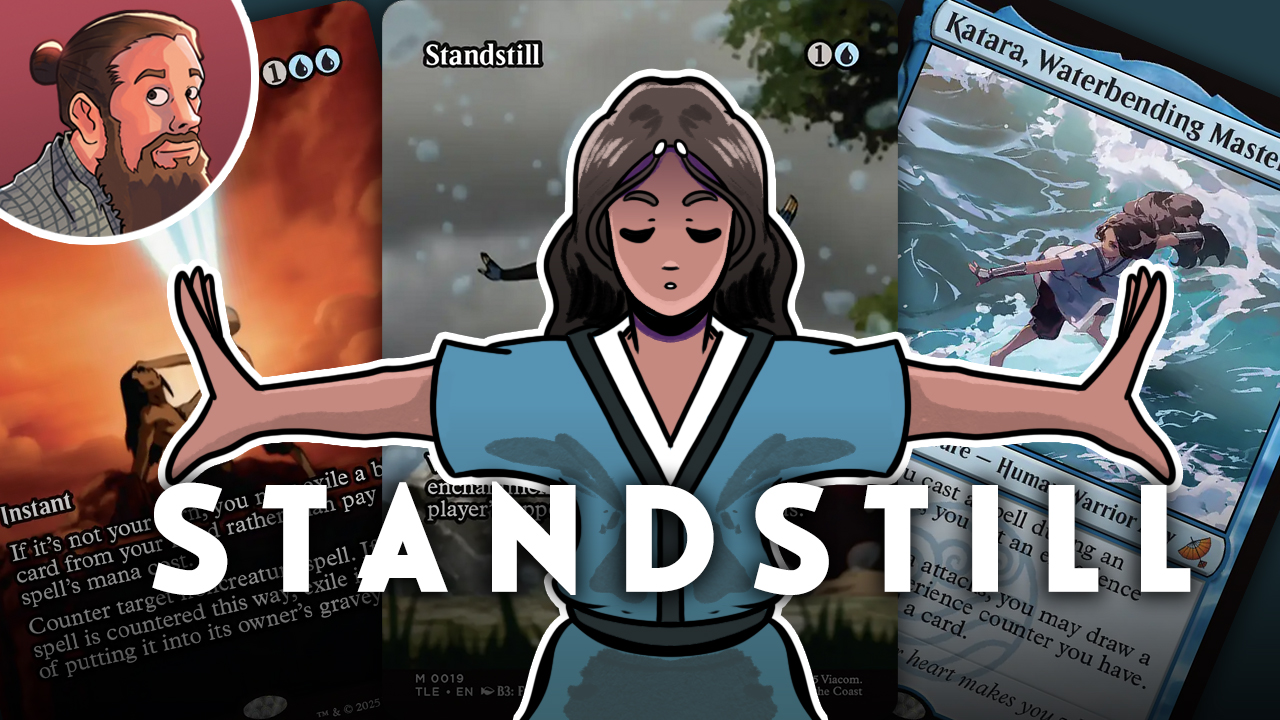Brewer's Minute: Top Down or Bottom Up?
Hey, everyone. It's time for another Brewer's Minute. This week, we are taking a more meta look at deck-building theory. Building Magic decks is a lot like making Magic cards, with there being two main pathways to the finished product. The first is building from the top down, which is where you start with a card or synergy and then fill in the gaps as you work your way down the deck-building pyramid. The second is bottom up, where you start with a wide group of cards at the base of the pyramid and work your way up to the top filling in the gaps. So, today we are going to break down these two styles of deck building and talk a bit about how which one you choose when you start building a deck impacts the finished product!
Don't forget: if you enjoy the series (and haven't already), make sure to subscribe to the MTGGoldfish YouTube Channel!
Transcript
This week, we have a really interesting topic: we are going to look at the two styles of deck building. When it comes to building decks, there are two main types of design: top down and bottom up. Today, we are going to talk a bit about the difference between these two deck-building styles and how the style that you choose when you start building a deck will have a major impact on where you end up! So, let's talk top down and bottom up!


Interestingly, the idea of top-down and bottom-up design applies to Magic card design just as much as it does to deck building. Mark Rosewater talks about it quite a bit. Colossus of Akros is a good example of top-down design. Basically, Wizards knew they wanted to represent the Colossus in Magic card form and from this starting point added in the abilities, the power and toughness, the creature type, the art, the flavor, and everything else. Basically, the goal of building a Colossus dictated the other aspects of the design. On the other hand, Fiery Temper is an example of bottom-up design. Wizards knew they wanted a madness Lightning Bolt, so Fiery Temper likely started with its effect, and then the name, flavor, and other aspects of the card were added in afterwards. Building decks is the same way.

Temur Summonings is a good example of top-down design. I started with Metallurgic Summonings, a card that I love and was super excited about, and put it at the top of the deck-building pyramid. After this, the rest of the choices in the deck were dictated by the all-encompassing presence of Metallurgic Summonings. On the next level of the pyramid, we have Nissa's Renewal and Part the Waterveil—the two cards I most wanted to abuse with Metallurgic Summonings. While these cards are not as important as Metallurgic Summonings itself, they are still key to the plan of the deck and necessary to make Metallurgic Summonings work. Then, as the bottom of the pyramid, we have a whole bunch of support cards that are still needed to make the deck function but are fairly interchangeable. Cultivator's Caravan and Natural Connection allow us to ramp into our Metallurgic Summonings, Cathartic Reunion and Tormenting Voice help us find our combo pieces, and Radiant Flames and Harnessed Lightning allow us to interact with our opponent. Basically, we start at the top of the deck with a single card (or synergy, or small group of cards) and work our way down through the rest of the deck. This is the essence of building a deck from the top down.

On the other hand, Merfolk in Modern is a good example of bottom-up design. You most likely start by running a search on Gatherer or Magic Online for the creature type "Merfolk" and realize that one of the most powerful aspects of the tribe is the abundance of powerful lords. So, instead of starting from a single card at the top of the pyramid, we start with a whole bunch of cards as the base of the pyramid and work our way up. On the next level, we have a bunch of support Merfolk like Cursecatcher, Silvergill Adept, and Master of Waves. After that, we continue to work up the pyramid, adding in some removal, some counters, and finally Spreading Seas at the very top.
Maybe the most interesting aspect of the difference between top-down and bottom-up design is just how much the path you choose for building a deck impacts the finished product. Look again at the Temur Summonings deck. Imagine that you started with the bottom of the pyramid with card draw, removalm and ramp. What is the chance that you actually end up with a Temur Summonings deck? Not very high. If this was the starting point, you're probably more likely to end up with a dredge deck (to take advantage of Cathartic Reunion and Tormenting Voice), a midrange / ramp deck fueled by Cultivator's Caravan, or even a Vehicles or Metalwork Colossus deck.
Similarly, if you started at the top of the Merfolk pyramid with Spreading Seas, what are the odds you would end up with Merfolk tribal? Also not very high. You could be a control deck, using Spreading Seas to disrupt the opponent's mana and cycle through your deck, or a janky land destruction deck with Choke or Boil, but if you started with Spreading Seas, your mind probably wouldn't immediately jump to Merfolk lords.
Basically, the point of all this isn't to say that one way of building a deck is better than the other. Both top-down and bottom-up deck design have the possibility of leading to very powerful decks. Instead, the importance of this is that you think about how you are building your deck before you start. When you sit down to brew, take a second and consider whether you are building from the top down (around a specific synergy or card and then filling in the gaps as you move down the pyramid) or from the bottom up (from a wide base or broad archetype and then filling in the less-important parts of the deck as you move up the pyramid). While either way is fine, what you want to avoid is flailing around in the middle and jumping back and forth between deck-building theories.
Conclusion
Anyway, that's all for today. As always, leave your thoughts, ideas, opinions, and suggestions in the comments, and you can reach me on Twitter @SaffronOlive or at SaffronOlive@MTGGoldfish.com.













